 To enhance service speed and avoid tariff delays, we've opened a US warehouse. All US orders ship directly from our US facility.
To enhance service speed and avoid tariff delays, we've opened a US warehouse. All US orders ship directly from our US facility.
| Cat. No. | Product Name | Field of Application | Chemical Structure |
|---|---|---|---|
| DC41090 | SR 11302 Featured |
SR 11302 is an activator protein-1 (AP-1) transcription factor inhibitor. SR 11302 is a retinoid that specifically inhibits AP-1 activity without activating the transcription of retinoic acid response element (RARE).
More description
|
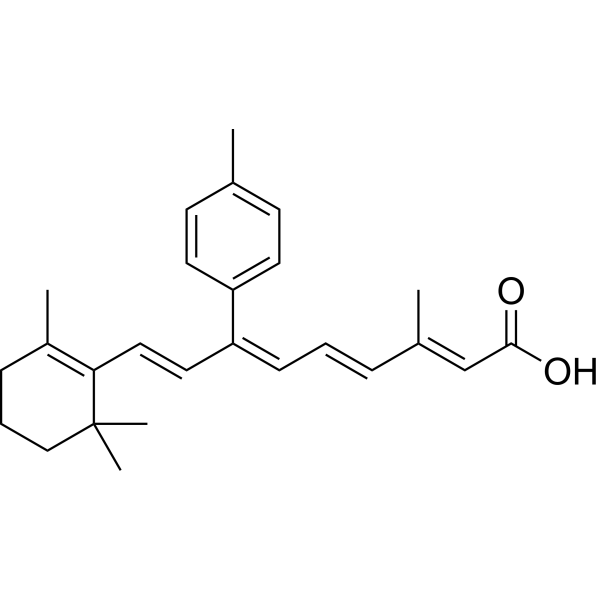
|
| DC65900 | 1-Piperidinecarboxylic acid, 4-bromo-3-oxo-, 1,1-dimethylethyl ester Featured |
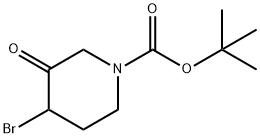
|
|
| DC11634 | EX-229 Featured |
EX229 is a small molecule AMPK activator that dose-dependently increases AMPK activity of α1-, α2-, β1- and β2-containing complexes at 50 uM
More description
|

|
| DC9732 | Sufugolix(TAK-013) Featured |
Sufugolix(TAK-013) is a non-peptide, orally-active, selective antagonist of the gonadotropin-releasing hormone receptor (GnRHR) (IC50 = 0.1 and 0.06 nM for affinity and in vitro inhibition, respectively).
More description
|

|
| DC33734 | NNK Featured |
NNK is a procarcinogen, a major tobacco-specific toxicant that inhibits the expression of lysyl oxidase, a tumor suppressor.
More description
|

|
| DC60170 | Propanoic acid, 3-[[[(phenylmethyl)thio]thioxomethyl]thio]- Featured |
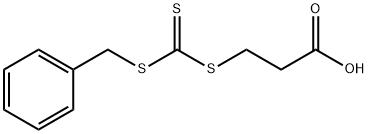
|
|
| DC60165 | DoPAT Featured |

|
|
| DC60172 | SY292470 Featured |
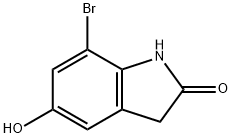
|
|
| DC43005 | CYM50769 (ML250) Featured |
CYM 50769 is a small-molecule, selective NPBWR1 antagonist that effectively inhibits NPW-23-stimulated proliferation in ATDC5 cells, making it a valuable tool for studying endochondral ossification processes.
More description
|
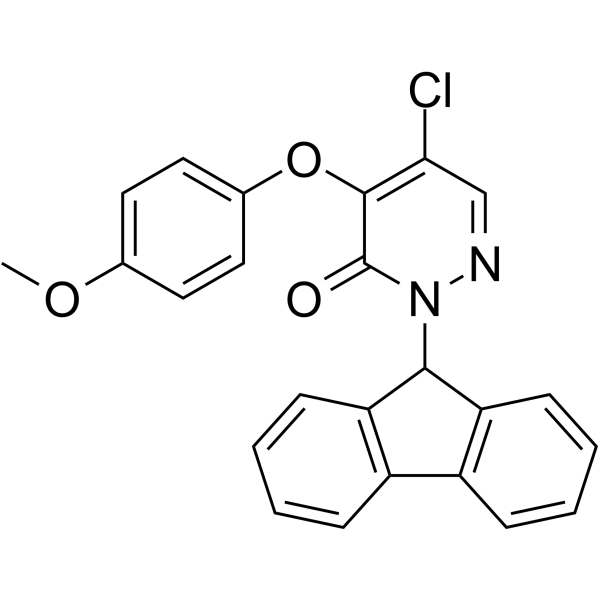
|
| DC12676 | VL-285 Featured |
VL285 is a potent VHL ligand, degrading HaloTag7 fusion proteins.
More description
|

|
| DC60166 | Benzenecarbodithioicacid, phenylmethyl ester Featured |
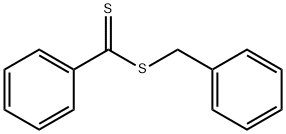
|
|
| DC42577 | SSAA09E2 Featured |
SSAA09E2 is a novel inhibitor of SARS-CoV replication, acting by blocking early interactions of SARS-S with the receptor for SARS-CoV, Angiotensin Converting Enzyme-2 (ACE2)
More description
|

|
| DC60163 | FPPS-IN-11 Featured |
FPPS-IN-11 represents a novel class of non-bisphosphonate inhibitors that allosterically target farnesyl pyrophosphate synthase (FPPS), demonstrating potent activity with an IC50 value of 200 nM.
More description
|
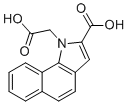
|
| DC43792 | Mesendogen Featured |
Novel inhibitor of TRPM6, promoting mesoderm and definitive endoderm differentiation of human embryonic stem cells through alteration of magnesium homeostasis
More description
|
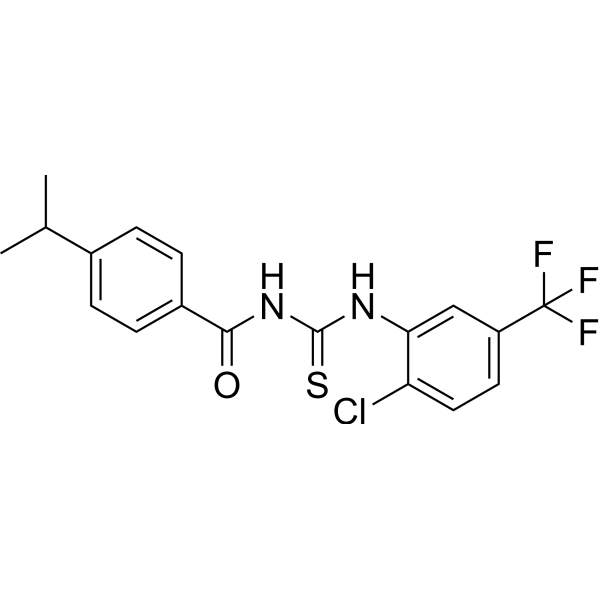
|
| DC60161 | NSC2805 Featured |
NSC-2805 is a WWP2 ubiquitin ligase inhibitor.
More description
|
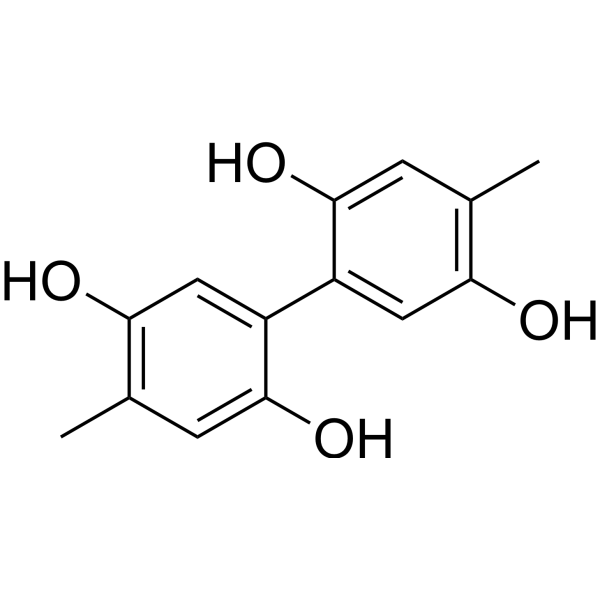
|
| DC60175 | VK-28 Featured |
VK-28 is a brain-penetrant iron chelator that effectively suppresses mitochondrial lipid peroxidation, whether induced by Fe/ascorbate or occurring basally (IC50 = 12.7 μM). It demonstrates notable neuroprotective activity in ICV-6-OHDA models, making it a promising candidate for Parkinson’s disease and related neurodegenerative disorder research.
More description
|
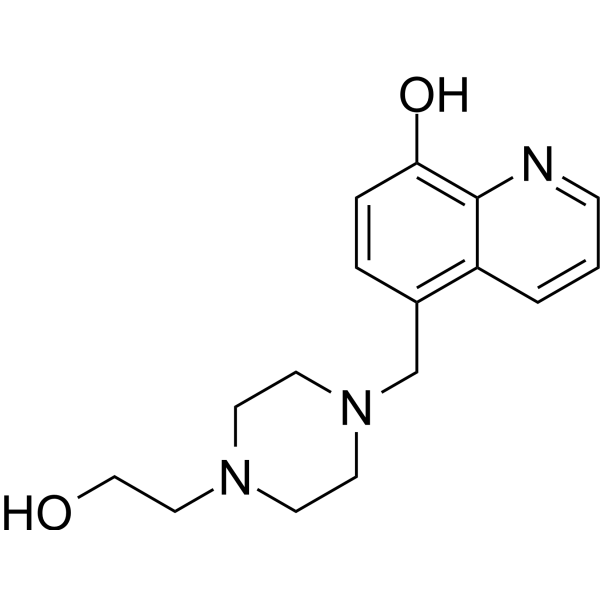
|
| DC8176 | Tradipitant(VLY-686) Featured |
Tradipitant (VLY-686) is a selective neurokinin-1 (NK-1) receptor antagonist with potential therapeutic applications.
More description
|

|
| DC60159 | Azo-Resveratrol Featured |
Azo-Resveratrol is an analog of Resveratrol used as a potent tyrosinase inhibitor.
More description
|
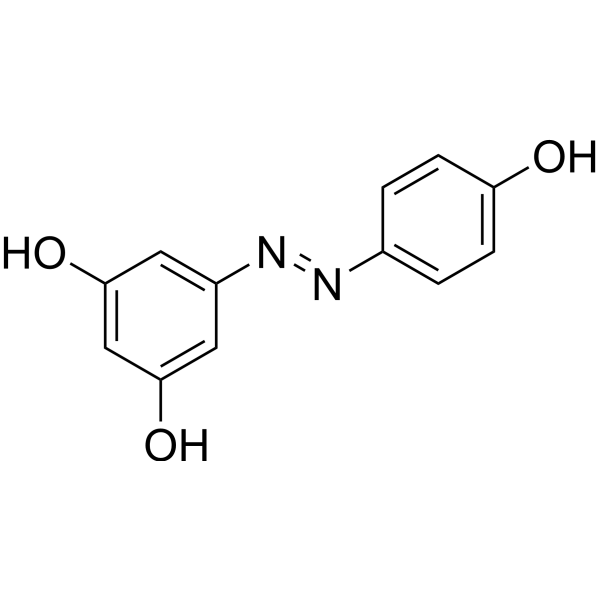
|
| DC60158 | K-975 Featured |
K-975 is a first-in-class TEAD inhibitor, directly inhibiting YAP/TAZ-TEAD protein-protein interaction and showing a potent anti-tumor effect in malignant pleural mesothelioma. K-975 was covalently bound to an internal cysteine residue located in the palm
More description
|
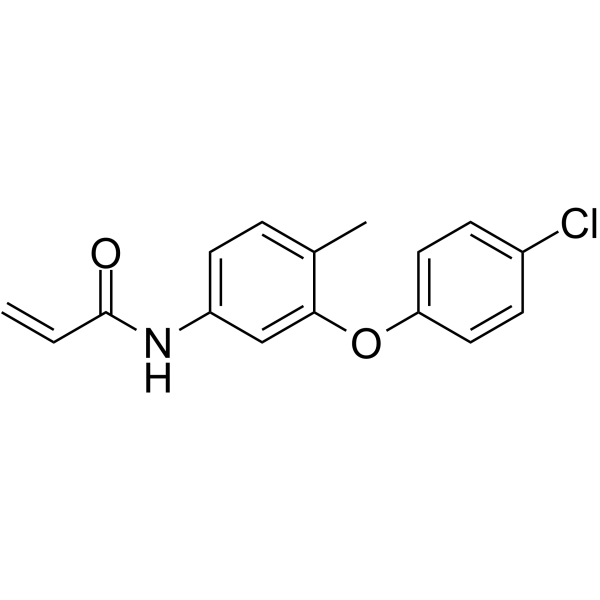
|
| DC60153 | 2-(2-bromophenyl)-5-chloro-4H-3,1-benzoxazin-4-one Featured |
2-(2-bromophenyl)-5-chloro-4H-3,1-benzoxazin-4-one is an human neutrophil elastase inhibitor.
More description
|
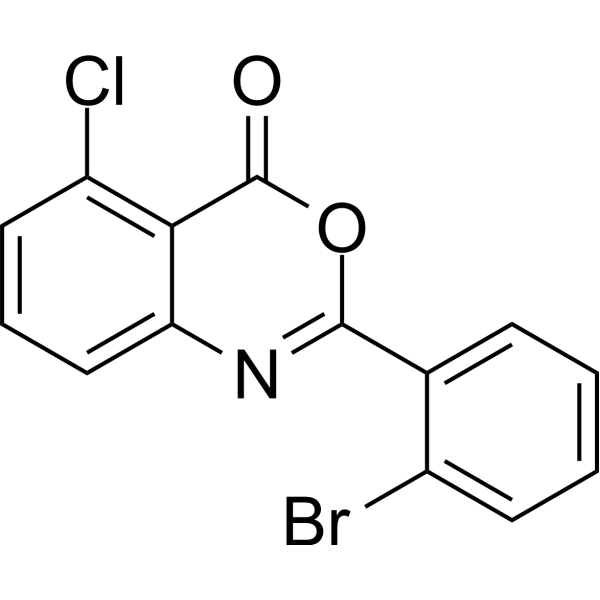
|
| DC21659 | SKI-178 Featured |
SKI-178 is a potent, specific, non-lipid SphK1 inhibitor with Ki of 1.33 uM, displays no significant activity for SphK2 (IC50>25 uM).
More description
|

|
| DC12634 | SW-100 Featured |
SW-100 (SW100) is a potent, selective, brain penetrable HDAC6 inhibitor with IC50 of 2.3 nM, displays >1,000-fold selectivity over all other class I, II, and IV HDAC isoforms.
More description
|

|
| DC60150 | S-[2-(4-Pyridyl)ethyl]-L-cysteine Featured |
S-β-(4-Pyridylethyl)-L-cysteine is a specialized biochemical compound commonly used in research applications.
More description
|
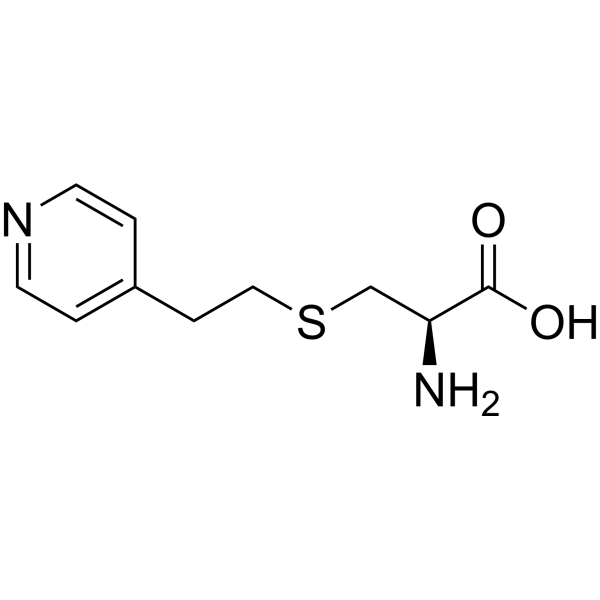
|
| DC33094 | Adaphostin Featured |
Adaphostin is a novel activator of Fas-mediated death pathway in Bcr/Abl-positive leukaemia.
More description
|

|
| DC42591 | M351-110 Featured |
M351-110 is a V-domain immunoglobulin suppressor of T-cell activation (VISTA) agonist that enhances immune responses, making it a promising candidate for cancer immunotherapy research.
More description
|
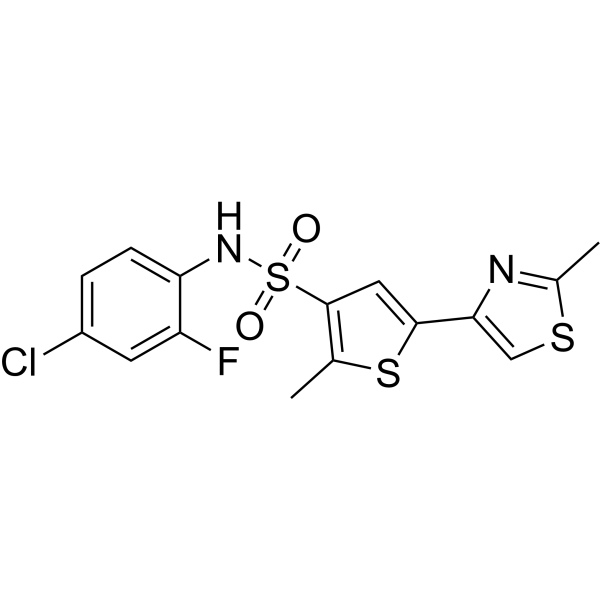
|
| DC42647 | ML202 Featured |
ML202 represents a selective allosteric modulator of human pyruvate kinase M2 (hPK-M2) that specifically enhances phosphoenolpyruvate (PEP) binding cooperativity without significantly affecting adenosine diphosphate (ADP) binding kinetics.
More description
|
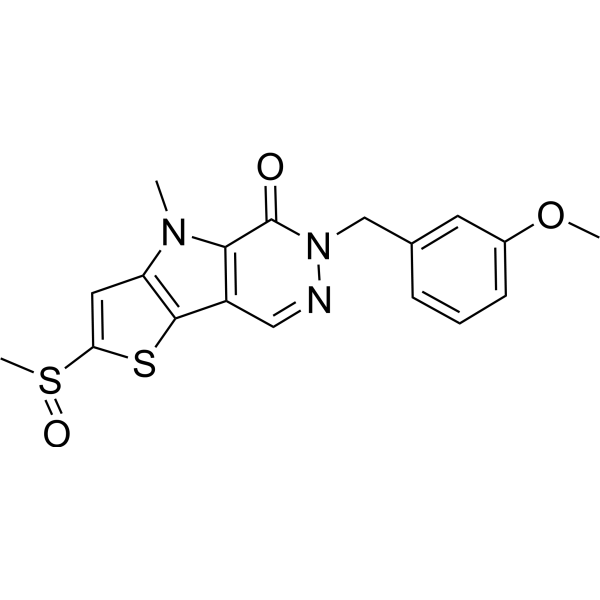
|
| DC42733 | Phevamine A Featured |
Phevamine A is a phytotoxic secondary metabolite produced by Pseudomonas syringae. This small molecule compound facilitates bacterial proliferation through its ability to suppress host plant defense mechanisms.
More description
|
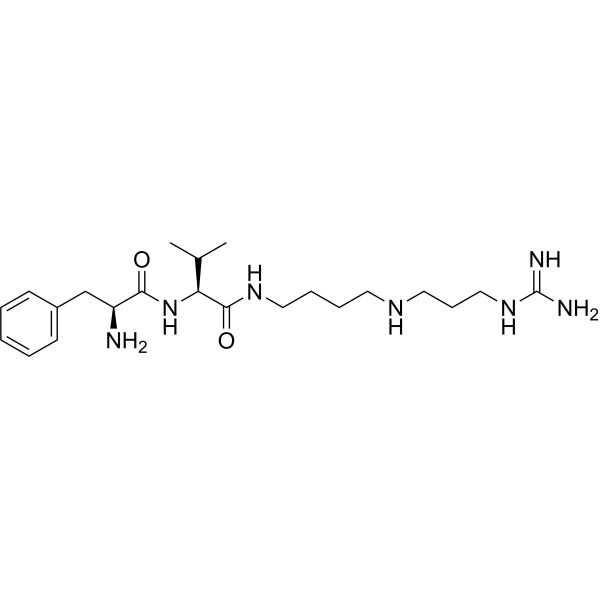
|
| DC23496 | VU-29 Featured |
VU-29 (DPAP) is a potent, selective and allosteric potentiator of rat mGlu5 receptor with EC50 of 9 nM, displays >50-fold selectivity over mGlu1 and mGlu2 receptor (EC50=557 nM and 1.51 uM).
More description
|

|
| DC42574 | HyT36 Featured |
Hydrophobic inducer of the degradation of stabilized proteins, degrading HaloTag2 fusion proteins
More description
|
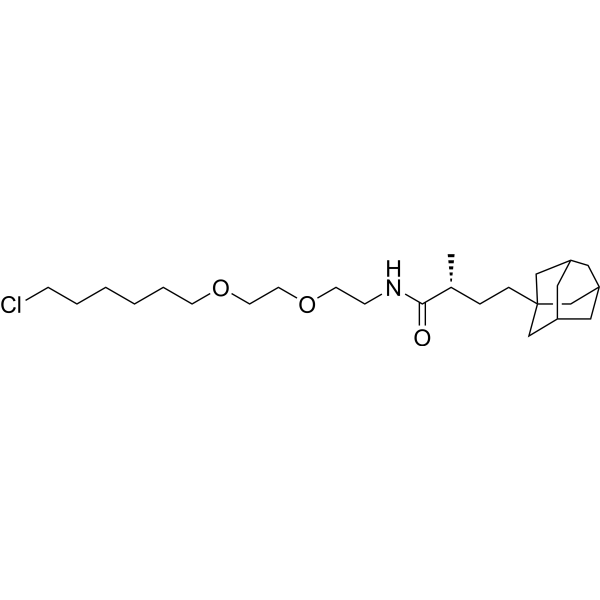
|
| DC42571 | ARN-21934 Featured |
ARN-21934 is a novel potent and highly selective inhibitor for human topoisomerase II α over β.
More description
|
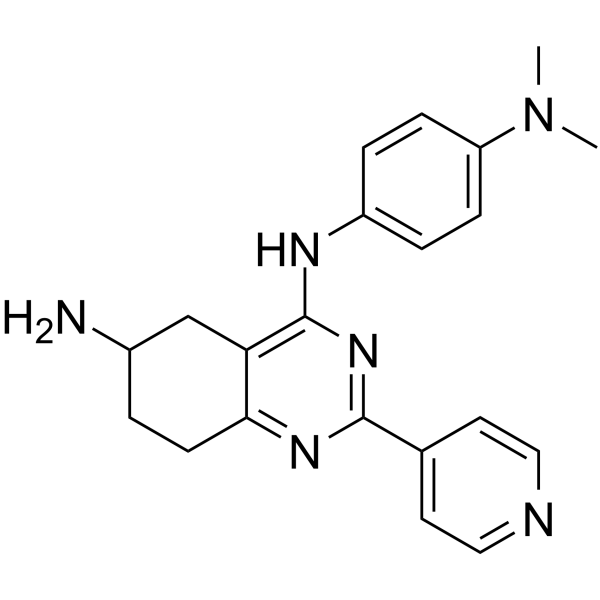
|